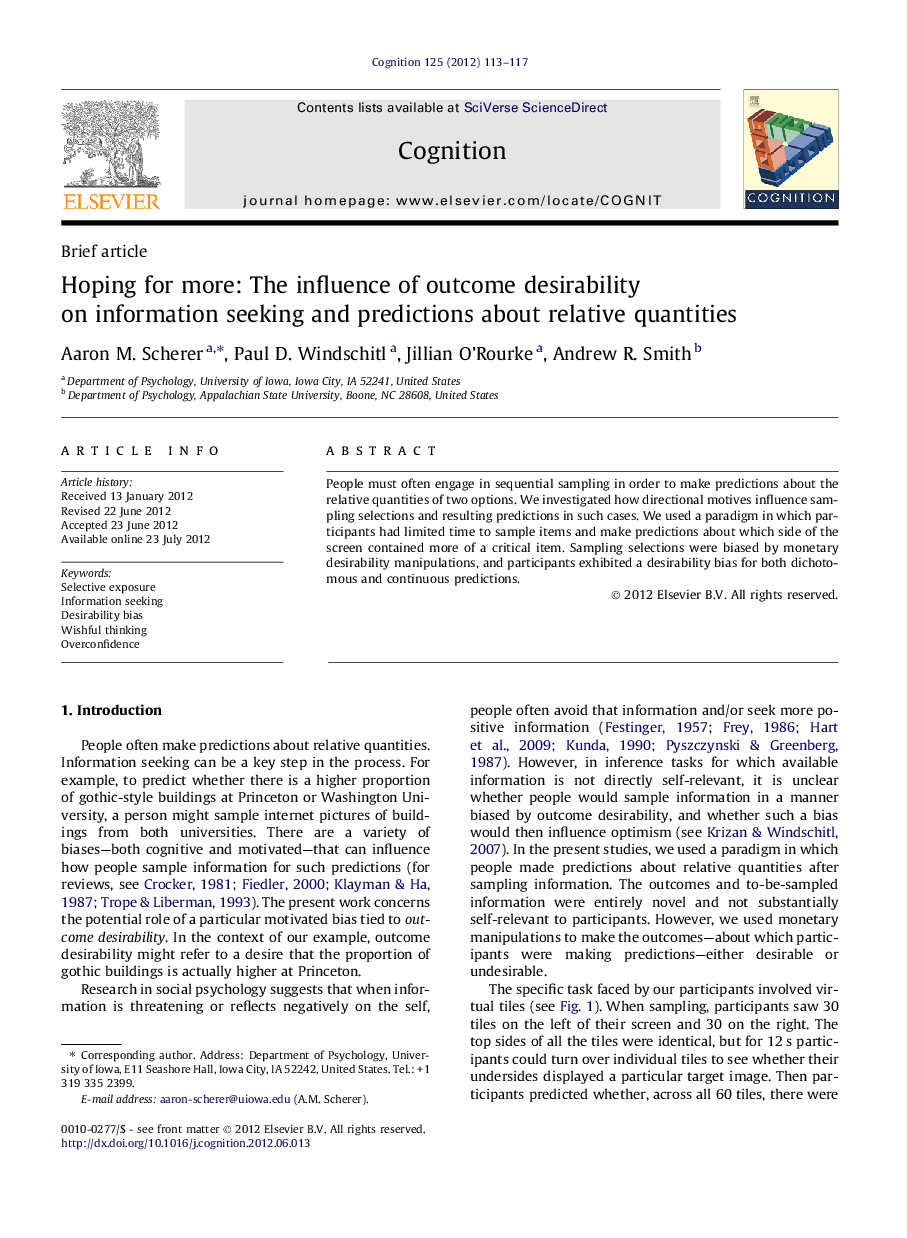| Article ID | Journal | Published Year | Pages | File Type |
|---|---|---|---|---|
| 10457682 | Cognition | 2012 | 5 Pages |
Abstract
People must often engage in sequential sampling in order to make predictions about the relative quantities of two options. We investigated how directional motives influence sampling selections and resulting predictions in such cases. We used a paradigm in which participants had limited time to sample items and make predictions about which side of the screen contained more of a critical item. Sampling selections were biased by monetary desirability manipulations, and participants exhibited a desirability bias for both dichotomous and continuous predictions.
Related Topics
Life Sciences
Neuroscience
Cognitive Neuroscience
Authors
Aaron M. Scherer, Paul D. Windschitl, Jillian O'Rourke, Andrew R. Smith,
